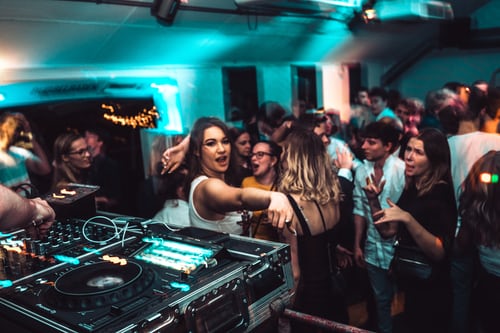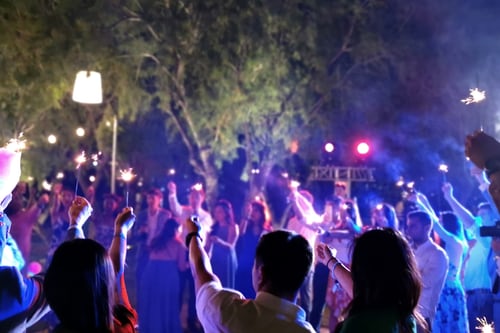The body image and self acceptance is a concept that has has been miraculously changing in the past few decades. What used to be characterised by extreme norms of beauty has developed into a more accommodating concept of beauty, power, and self-esteem. This is a cultural paradigm change that is evident in various spheres, including fashion, entertainment and even the nightlife. The acceptance and diversification of the male stripper world is one of the most captivating thoughts of this change. This profession is now tied to the culture of body positivity, self-expression, and individuality because, although it was once linked with hyper-masculine stereotypes and strict physicality expectations, society is in a different move where the profession is appreciated.
Social attitudes toward body image and gender have always been reflected in the entertainment industry, especially adult entertainment. In Australia, the same is becoming more apparent with the development of male performance art taking on new perceptions other than the old ones. Male strippers Australia are an evolving story in the present day, in which confidence, charisma, and honesty take a back seat since they augment physical attractiveness. Viewers are not being attracted only on the basis of sculpted bodies or film-star physiques; they can see performers who convey character and appeal to them. The development, despite broadening the industry, has not only allowed men of various body types, backgrounds and styles to be welcomed to the industry and to achieve success with its candidness but also to give other men a chance to achieve a success that was formerly enjoyed by one perfect image of a man.
An Objectification into Empowerment
In the past, male stripping used to be viewed quite simply through the prism of objectification and the hyper-masculine category. The males were supposed to be the ideal man, have firm muscles, tan skin and radiate a feeling of power. Fantasy was made to be the foundation of the performances themselves, and frequently they were used to support the traditional role expectations and the unrealistic appearance ideals. But this dynamic began to change as the discourse on mental health, self-esteem, and gender equality became more popular. Viewers had started to desire a sense of genuine quality instead of flawlessness. They were not just expected to have actors showing a perfect body, but also to adopt personality and confidence among their assets. The objectification to empowerment changed the dimensions of the definition of being sexy on stage. The skill of a performer to interact with the audience, be able to be funny and project an air of true confidence came to be valued more than physical factors. This way, the male stripping business has been a place of not only entertainment but freedom of self-expression and personal liberation.

Reconstruction of Masculinity in the Course of Performance
Male stripping has also risen as a body-positive movement that has led to the challenge of masculinity. Historically, the male gender has been continually scolded against being sensitive and indulging in aesthetic self-expression. Removing these barriers, stripping makes use of performance, costuming, and emotional connection. It enables men to experience and reveal various aspects of themselves to the world of sensuality, creativity, humour, and confidence without the fear of criticism. This candour has helped to bring a more accommodating view of what it means to be masculine. Contrary to being stereotyped as one image of power and dominance, the contemporary male actors can be seen as a representation of diversity in looks and perception. There are men who opt to offer less manly vibes, being more playful, and there are those who glorify toughness or nonconformity. This variety of expression not only enriches the expectations of the audience, but it also makes men everywhere feel comfortable in their skin. The stage has turned into a platform of individuality celebration and breaking the old stereotypes about sex and beauty.
The place of Body Positivity in Contemporary Entertainment
The body positivity that was a predominantly female movement has been extended to the male gender in very significant ways. This inclusion is transformative in the same context of the entertainment sector and especially live performance. The concept of all bodies being beautiful and desirable contradicts the various complex insecurities that most men possess regarding their beauty. This change aids in getting the male body image normalised, a topic that was not properly discussed in the past several years. Within the Australian entertainment industry, the achievement of various body categories and appearance among male entertainers has been one of the indicators of a more accommodating cultural environment. Dancers of different body shapes and appearances now perform in clubs, individual shows, and performance groups, and it is evident that attractiveness is not one-dimensional. This change is also something the audiences can relate to as they see themselves in the person they are watching. It is simple; confidence and sincerity are as alluring as physical strength or beauty. In that regard, body positivity in the entertainment sector is not only empowering to the performers, but it also gives the audience the power to accept their own uniqueness.

Cultural Effect and Social Acceptance
The increasing becoming of male stripping as an art and a display of self is an indication of how society in Australia is changing. With the ongoing changes in debates on body image and mental health, increasing recognition is placed on the adverse effects of limiting ideals on men and women. Male performers aimed to overcome the previous idea that only one type of look is desirable by portraying a variety of different forms. This non-conformity is close to readers of today, where fake and materialism have been misplaced with naturalness and authenticity. Additionally, the male stripping acceptance in the culture has also given way to discussing the issue of equality in the entertainment sector. Advocacies of respect, consent, and power, which have been present and applicable in the female side of adult entertainment, are now being applied to the male performers. Through this, the profession is becoming acceptable and artistically appreciated. The art that used to be considered a niche or a raunch occupation is being increasingly recognised as a good performance art that needs discipline, creativity, and confidence.





